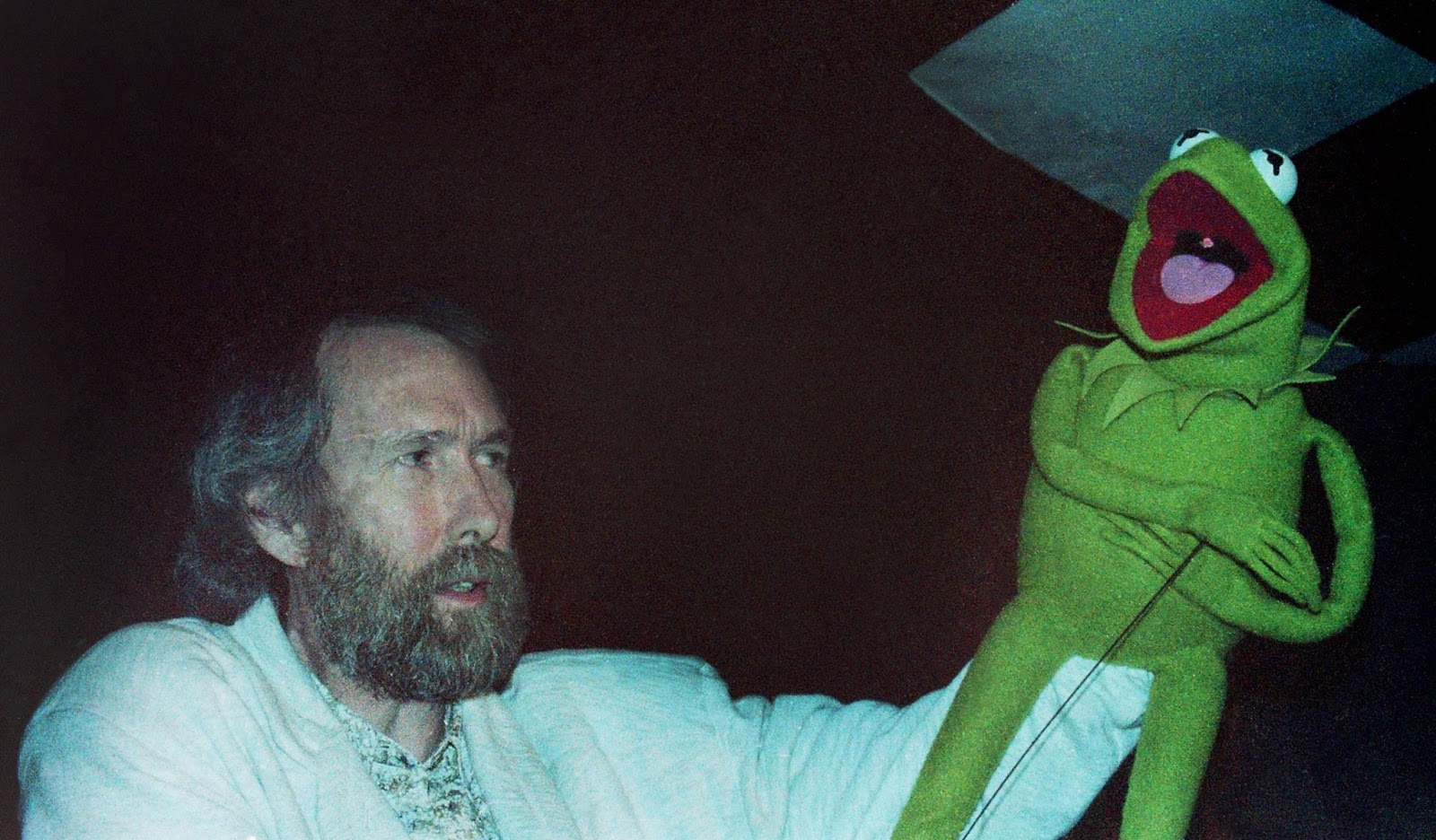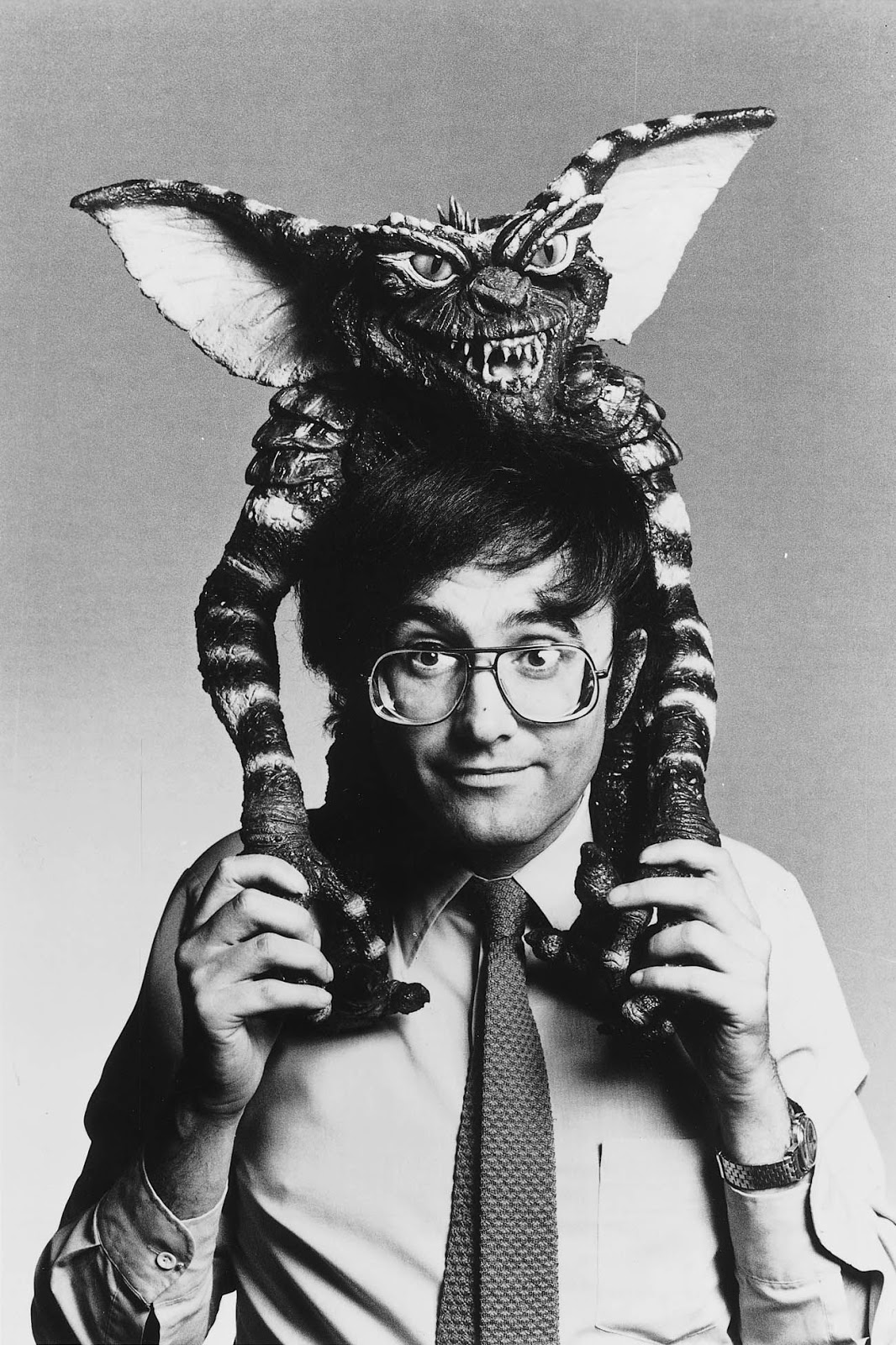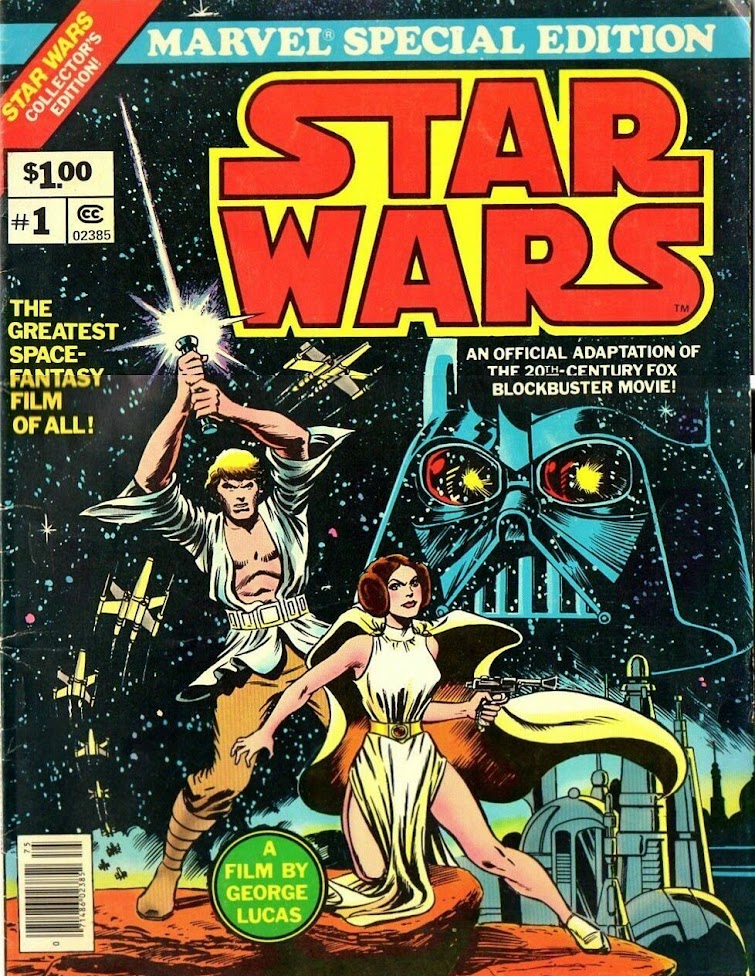An Empire of felt: 1986 exclusive interview with JIM HENSON
Materializing from the shadowy corners
of the small club, his lanky frame cutting through the cigarette
smoke like a train slowly emerging from the station, a long-haired
man sporting a greyish beard climbs the stairs leading to a modest
stage. He puts down delicately a duffel bag carrying a precious cargo
which has been a constant companion for close to 30 years. He reaches
inside gingerly, and brings out a limp, bright green piece of fabric
and felt which, in a quick turn of the wrist, becomes a lively and
witty amphibian that has been a staple of many generations' youth.
The eyes of the spectators glimmer with the nostalgic recognition of
the puppet which has become by this point an extension of its 49 year
old creator.
On June 2, 1986, the short-lived
Montreal Puppetry Festival had invited legendary performer Jim Henson
to chat with fans of the art form in a cabaret-style informal
evening. After a short performance with his famous alter ego Kermit, he
puts him back gently in his carrying bag, and starts to recounts to
the audience his path into the hearts of millions of grateful fans.
''I always wanted to do television.
From the time I left High School, I knew I would do it one day. I wanted to work at a local station, and they needed a puppeteer. At 17, I knew nothing about the craft, so I went to the library, read a few books and then went back saying: ''I'm a puppeteer''. They hired me straight away. It
all began in October 1954, with SAM & FRIENDS. It was a 5 minutes
show made up mainly of songs and spoofs. It was mostly a way to
experiment; I was still pretty much on the learning curve. At the
time, all I knew about puppetry was what I read in those books. I was also
very much inspired by the work of Burr Tillstrom who was the first to
use video as a way to complement puppetry at the start of the
fifties.
''Kermit was there at the very start,
but he wasn't yet a frog. In fact, no character was based on reality.
I was trying to avoid it. Puppets for me had to neither human-like or
represent reality. The first character I can say that referred to an
actual being was Rowlf the dog, who was created for a Purina Dog Chow
commercial. As a matter of fact, Rowlf is one of the rare puppets who
have survived up to now.''
 |
| A barely out of his teens Jim Henson working on Kermit's puppet, before he was fully identified as a frog. |
For the following 15 years, the Muppets
appeared regularly on various commercials, as well as on variety
shows like the Ed Sullivan show, until SESAME STREET exploded
onto TV screens in 1969.
''During the first years of SESAME
STREET, as well as on the MUPPET SHOW later, the shows could be
pretty violent. It was a lot about one character eating the other, or
just a bunch of explosions. Animal's drum kit would blow up. The
orchestra director's head would explode. Kermit himself would
explode.''
 |
| Daniel Seagren, Jim Henson and Frank Oz, operating Bert and Ernie in 1970 on SESAME STREET. |
''It's about that time I started
working very closely with Frank Oz. He's a bit responsible for
bringing ''special effects'' to the muppets. In fact, working with
Frank can be very complicated; we'd shoot underwater, or he'd have
kermit riding a bicycle.''
During
the first few years of SESAME STREET, Henson also produced a
series of TV shorts called TALES OF MUPPETLAND, which
featured comic retellings of classic fairy tales, like THE FROG PRINCE and THE MUPPET MUSICIANS OF BREMEN. To
avoid typecasting towards a younger audience, Henson made 15 sketches
for SATURDAY NIGHT LIVE
in 1975-1976. The experiment didn't last, though; "I saw what
[creator Lorne
Michaels] was going for and I really liked it and wanted to be a
part of it, but somehow, what we were trying to do and what his
writers could write for it never gelled... When they were writing for us, I had the feeling they were writing normal sitcom stuff, which is really boring and bland.''
Henson said in a 1982 interview.
 |
| Jim Henson bringing life to Catgut in THE MUPPET MUSICIANS OF BREMEN (1972) |
After plans for a new TV series was rejected by American networks in 1976, Henson knocked at British producer Lew Grade who welcomed his team in the United Kingdom for the filming of the ground-breaking series THE MUPPET SHOW, which ended up having its five seasons syndicated worldwide.
Seeking new challenges , but still
cautious, in 1979 Henson and his partner Frank Oz were wise enough to
leave the directing of their first feature film, THE MUPPET MOVIE, to someone else (James
Frawley, who had experience in the absurd with multiples episodes of
THE MONKEES, and the hilarious precursor to AIRPLANE, THE BIG BUS)
so they could focus on the technical challenges of bringing their
characters for the first time ''into the real world'' and out of the
relative safety of a set.
 |
| EMPIRE STRIKES BACK director Irvin Kershner, Yoda puppeteer Frank Oz and co-producer Gary Kurtz visited on set by Jim Henson who brought some friends over. |
In 1980, he helped make-up maestro Stuart Freeborn to develop the character of Yoda for THE EMPIRE STRIKES BACK, and suggested successfully that Frank Oz operates and voice the puppet. The following year, Jim Henson tried his hand at directing a feature film with the follow-up to THE MUPPET MOVIE; THE GREAT MUPPET CAPER, all the while developing with Frank Oz and illustrator Brian Froud an imposing and ambitious project; THE DARK CRYSTAL.
''I worked on THE DARK CRYSTAL as a
director (along with Frank Oz) but I did spend six years working on
the concepts and the script. As for the puppets, they were primarily
conceived by Brian Froud. Essentially, THE DARK CRYSTAL is pretty
much a film about the positive values in life; the Mystics and the
Gelflings are non-violent and humble while the Skeksis are vile, lazy
and evil. But it is still the former that wins the day.''
 |
| Jim Henson with concept artists Brian Froud and puppet builder Wendy Froud, testing a Gelfing head for THE DARK CRYSTAL. |
Henson kept busy
during the years leading to THE DARK CRYSTAL, as he kept
contributing to THE MUPPET SHOW scripts up to its final
episode in 1981, and started afterwards his involvement, more
limited, to FRAGGLE ROCK which started in 1983. At the same
time, he started planning his next fantasy cinematographic opus,
LABYRINTH.
After
answering a few questions from the crowd, he thanks the grateful
audience, and leaves the stage under thunderous applause. He walks
to a table to relax and chat with the organizers of the event.
Nervous, three young men and one young woman, all editors of a
fanzine called CINETIK, are sitting at a nearby table in the poorly
lit cabaret. They had been promised an interview with the legendary
performer, but are starting to wonder if he would really take the
time to come and talk to them, a bunch of snot-nosed kids barely out
of their adolescence. After a while, I notice Henson looking over
his shoulder towards us, then turning back to his friends at his
table, telling them something inaudible to us. He gets up and walks
to us, warmly greeting us with a smile and saying ''Hi guys'' in a
voice that contained more than a hint of Kermit the frog.
CINETIK: How does LABYRINTH differ from THE DARK CRYSTAL?
CINETIK: How does LABYRINTH differ from THE DARK CRYSTAL?
JIM HENSON: LABYRINTH is much
lighter than THE DARK CRYSTAL. It's aimed towards fantasy much
more than reality. You can say that it stands somewhere between The
Muppets and THE DARK CRYSTAL.
CINETIK: How did David Bowie become
involved with the project?
JIM HENSON: David Bowie was the first
actor I thought of for the role of the Goblin King. In fact, I
couldn't think of anyone else. The role was especially written for
him.
 |
| David Bowie and Jim Henson with Hoggle (Shari Weiser) on the set of LABYRINTH. |
CINETIK: You've just talked of the
values expressed throughout THE DARK CRYSTAL. Which values
are you promoting with LABYRINTH?
JIM HENSON: It's still ''good values'',
like reaching a certain maturity, becoming responsible, growing up,
etc...I made that movie because I wanted to do a fairy tale, with
dragons, goblins and other weird creatures. Brian Froud, the
illustrator behind the book FAERIES, designed the worlds of
THE DARK CRYSTAL and LABYRINTH. He's a true genius.
 |
| Jim Henson surrounded by the creatures designed by Brian Froud. |
CINETIK: What do you think of this recent trend of making movies centered around puppets, like Joe Dante's GREMLINS or GHOULIES...?
JIM HENSON: Bah! It's OK I guess. But
very often, it's not great puppeteering. These are usually special
effects technicians who do not have that special touch a puppeteer
can have. My films do not have that kind of animation at all.
CINETIK: What was your involvement in
DREAMCHILD?
JIM HENSON: My Creature Shop was
contracted to build the five fantastical characters from ALICE IN
WONDERLAND that are seen in the film. It is by the way a marvelous little film, which I hope is still in theaters. In any
case, it should be out soon on home video.
CINETIK: Who decided to put an end to
THE MUPPET SHOW?
JIM HENSON: The decision was my
colleague's and mine. The show had been going on for five years
already, and it just seemed that we wanted to stop before getting
bored. But it was a great time and we had fun.
CINETIK: What lead to the decision to bring The Muppets to the big screen?
CINETIK: What lead to the decision to bring The Muppets to the big screen?
JIM HENSON: We simply wanted to give it
a shot, just to see if it would work. We also attempted to perfect
the muppets; have them wear different outfits, make their
performances more complex. As I stated before; have them swim, ride
a bike, and in a sense, perfect them.
 |
| Bringing Kermit to his natural habitat. Jim Henson getting wet on the set of THE MUPPET MOVIE (1979) |
CINETIK: What do you prefer to do:
operating the muppets, or directing?
JIM HENSON: I really like to direct. I
love to supervise and direct a movie. There's no feeling like it in
the world.
CINETIK: On THE MUPPET SHOW, how
did you work with the guest stars?
 |
| Jim Henson and Kermit in an intimate moment with guest Linda Ronstadt in episode 523 of THE MUPPET SHOW (1980) |
JIM HENSON: Frank Oz and I would write the biggest part of the script and the sketches, but the guest would always add new ideas. It was really a collaborative teamwork.
CINETIK: Do you have any input on the
comic strip by the Gilchrist Brothers?
JIM HENSON: Well, I can't read it all
simply because I either lack the time or the opportunity. At the
start, they would often consult us to know if Kermit would do this or
not, would Rowlf say this or not, etc... By now, they are on their
own. But if the need is there, I still have my say.
 |
| The comic strip by the Gilchrist Brothers that ran from 1981 (starting a few months after the end of THE MUPPET SHOW on TV) and 1986 in over 600 newspapers worldwide. |
CINETIK: We can find on the market a lot of Muppets merchandise. What is your involvement?
JIM HENSON: Some people from New York
are in charge of marketing. I think it's fun to see the Muppets all
over the place. It's pretty flattering.
CINETIK: You've been in a relationship
with Kermit for over 30 years now. How do you get along?
JIM HENSON: Kermit is a part of me. It
always feels weird to put him in a bag when I travel. Besides, often
when I speak, I feel that Kermit takes over.
CINETIK: What are your next projects?
JIM HENSON: They are mainly for
television. For NBC, I am working on a British fairy-tales anthology
series called THE STORYTELLER which should air next season.
For ABC, I am preparing a special for Christmas 1986, Finally, for
CBS, there will be a four hour miniseries which will feature the
Muppets' returm to TV, which will be called ISLAND OF THE LOST
MUPPETS. (A show that ended up never coming to fruition)
As for the movies, I participated in
the adaptation of the musical THE LITTLE SHOP OF HORRORS
directed by my dear friend Frank Oz. It should be in theaters by next
November.
 |
| The editors of CINETIK flanking Jim Henson; Eric Lavoie, Hélène Génier and Serge Vidal (Photo by Sylvain Mallette) |
By this point, Jim Henson is called
away, and we thank him profusely for spending the time with these
young fans. Walking away towards his friends waiting at the table,
his shoulders slightly hunched, There was something a bit weary about
his gait.
After a long string of successes,
LABYRINTH proved to be a financial disappointment, partly
because of its elevated cost. Jim's son Brian remembered, in a 1990 interview, that it was "the closest I've seen him to turning in
on himself and getting quite depressed.". By now however, the
film has reached a decidedly cult status and has finally reached its
audience.
Winning Emmy awards for his outstanding
show THE STORYTELLER and the
JIM HENSON HOUR must
have helped to put a balm on the wound left by
LABYRINTH's commercial
failure. The 10th
episode of THE JIM HENSON HOUR was
in fact a fascinating one hour look at the techniques of the Muppets.
Sadly, the show was cancelled after 12 episodes due to NBC's
inability to leave it in one scheduled spot.
Jim
Henson died in New York on May 16, 1990 from streptococcal toxic
shock syndrome at the young age of 53. A few months earlier, he had
started negotiations to sell the Muppets to Disney, a transaction
that would be finalized 14 years later. Two Memorial services were held, one in New York, and the second one months later in London. The first one held at the Cathedral of St. John the Divine on May 21, 1990, was an emotional affair, where his life's work congregated onstage, in an heart-wrenching amalgam of beauty, tears and silliness, perfectly reflecting the man.
The
legacy of Jim Henson is alive and well; The world of Thra will be
revisited in the Netflix prequel series THE DARK CRYSTAL: AGE OF RESISTANCE, coming soon from director Louis Leterrier, and a new series starring the Muppets is set up to air on the Disney streaming
service next year that would be a direct sequel the THE MUPPET TAKES MANATHAN (Frank Oz, 1984). The 80s setting may help bring back a bit
of the magic that Frank Oz himself feels have been diluted by the
Disney team who, while talented, ''Don't really get it.'' The 2015
attempt at bringing back the Muppets, in a mockumentary style
reminiscent of THE OFFICE, undeservedly didn't really reach an audience. But the
characters are still wildly popular and beloved, so you can't count
them out just yet.
Henson
will have started an empire of felt and rubber, of googly eyes and
powdery explosions, and of wonders and laughter. The JIM HENSON CREATURE SHOP still produces practical effects and animatronics for
movies, the JIM HENSON FOUNDATION promotes and develop the art of
puppetry in the United States to this day, the Muppets live on
through a new series of films by Disney, and SESAME STREET is
beginning it's 50th
year on the air, having been watched by over 86 millions Americans,
and accumulating 189 Emmy Awards and 11 Grammys.








Comments
Post a Comment